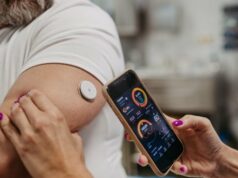Testing someone’s tears could pave the way for screening for diabetes-related complications, researchers have said.
A team from the University of New South Wales (UNSW) in Sydney said that using samples of tears could help detect early peripheral nerve damage.
Dr Maria Markoulli, senior author of the study, said: “We found that people with type 1 diabetic peripheral neuropathy which can result in recurring ulcers of the feet and in severe cases require amputation have reduced levels of a protein known as ‘substance P’ in their tear film.
“119,000 Australians have type 1 diabetes. In the future, they may be able to have a quick tear sample collected either at their optometrist, the chemist, GP or endocrinologist, and be told whether they are at risk.”
The trial involved nearly 100 people with type 1 or type 2 diabetes who had their tear films analysed. The research team focussed on two different types of proteins called neuropeptides.
The findings showed there were lower levels of ‘substance P’ in those with type 1 diabetic peripheral neuropathy. Although there was no evidence to support any changes in those with type 2 diabetes.
Peripheral neuropathy is a very common diabetes complication and develops when damage to the nerves occurs. High blood glucose over a number of years is one of the notable risk factors for peripheral neuropathy.
Although the condition cannot be reversed, early detection can help people with diabetes better manage it.
Dr Markoulli said that peripheral neuropathy is “notoriously difficult” to detect early and at the moment diagnosis can only be made by people who have been specifically trained.
She added: “What we’re proposing with this method is something that will be done quickly, non-invasively, and potentially could be done even by a non-specialist.”
The findings of the study have been published in The Ocular Surface journal.








